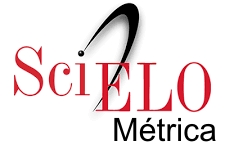Células y sepsis: un análisis integrado clínico biológico
Resumen
La investigación sobre la dinámica celular en la sepsis ha revelado alteraciones clave que comprometen tanto la respuesta inmune como la fisiología de los órganos. Esta revisión destaca la importancia de considerar la hiperinflamación persistente, impulsada por la citoquinemia, así como la fatiga del sistema inmunológico, que pueden llevar a una inflamación crónica y a una respuesta inmune debilitada. Además, la disfunción cardíaca y adrenal agrava la descompensación del paciente, contribuyendo a la aparición de hipotensión y choque séptico. Esto subraya la necesidad urgente de adoptar un enfoque integral en el tratamiento de las complicaciones asociadas. En este contexto, la revisión se centrará en los mecanismos subyacentes que vinculan la sepsis con la disfunción inmune, analizando cómo la reprogramación celular y la activación de diversas vías inflamatorias impactan los resultados clínicos.
Citas
2. de Oliveira S, Rosowski E, Huttenlocher A. Neutrophil migration in infection and wound repair: going forward in reverse. Nat Rev Immunol [Internet]. 2016 [cited 2023 Oct 20]; 16(6): 378–91. Available from: https://pubmed.ncbi.nlm.nih.gov/27231052/. doi: 10.1038/nri.2016.49
3. Borges A, Bento L. Organ crosstalk and dysfunction in sepsis. Ann Intensive Care [Internet]. 2024 [cited 2024 Sep 20]; 14(1):147. Available from: https://pubmed.ncbi.nlm.nih.gov/39298039/#:~:text=In%20sepsis%2C%20the%20concept%20of,that%20can%20induce%20further%20damage. doi: 10.1186/s13613-024-01377-0
4. Rosales C. Neutrophil: A cell with many roles in inflammation or several cell types?. Front Physiol [Internet]. 2018 [cited 2023 Nov 20]; 9:113. Available from: https://pubmed.ncbi.nlm.nih.gov/29515456/. doi: 10.3389/fphys.2018.00113
5. Manley HR, Keightley MC, Lieschke GJ. The neutrophil nucleus: An important influence on neutrophil migration and function. Front Immunol [Internet]. 2018 [cited 2023 Nov 20]; 9:2867. Available from: https://pubmed.ncbi.nlm.nih.gov/30564248/. doi: 10.3389/fimmu.2018.02867
6. Mass E, Nimmerjahn F, Kierdorf K, Schlitzer A. Tissue-specific macrophages: how they develop and choreograph tissue biology. Nat Rev Immunol [Internet] 2023 [cited 2023 Dec 18]; 23(9): 563–79. Available from: https://pubmed.ncbi.nlm.nih.gov/36922638/. doi: 10.1038/s41577-023-00848-y
7. Nobs SP, Kopf M. Tissue-resident macrophages: guardians of organ homeostasis. Trends Immunol. 2021; 42(6):495-507. doi: 10.1016/j.it.2021.04.007
8. Cortés M, Brischetto A, Martinez-Campanario MC, Ninfali Ch, Domínguez V, Fernández S, et al. Inflammatory macrophages reprogram to immunosuppression by reducing mitochondrial translation. Nat Commun [Internet]. 2023 [cited 2024 Enero 10]; 14(1):7471. Available from: https://pubmed.ncbi.nlm.nih.gov/37978290/. doi: 10.1038/s41467-023-42277-4
9. Aschenbrenner AC, Schultze JL. New "programmers" in tissue macrophage activation. Pflugers Arch. 2017;469(3-4):375-83. doi: 10.1007/s00424-017-1943-9
10. Chen S, Yang J, Wei Y, Wei X. Epigenetic regulation of macrophages: from homeostasis maintenance to host defense. Cell Mol Immunol [Internet]. 2020 [cited 2023 Dec 18]; 17: 36–49. Available from: https://www.nature.com/articles/s41423-019-0315-0. doi: https://doi.org/10.1038/s41423-019-0315-0
11. Sica A, Invernizzi P, Mantovani A. Macrophage plasticity and polarization in liver homeostasis and pathology. Hepatology. 2014;59(5):2034-42. doi: 10.1002/hep.26754
12. de Pablo R, Monserrat J, Prieto A, Alvarez-Mon M. Role of circulating lymphocytes in patients with sepsis. Biomed Res Int [Internet]. 2014 [cited 2023 Dec 18]; 2014:671087. Available from: https://pubmed.ncbi.nlm.nih.gov/25302303/. doi: 10.1155/2014/671087
13. Danahy DB, Strother RK, Badovinac VP, Griffith TS. Clinical and experimental sepsis impairs CD8 T-Cell-mediated immunity. Crit Rev Immunol [Internet]. 2016 [cited 2023 Dec 18];36(1):57-74. Available from: https://pubmed.ncbi.nlm.nih.gov/27480902/. doi: 10.1615/CritRevImmunol.2016017098
14. Jensen IJ, Sjaastad FV, Griffith TS, Badovinac VP. Sepsis-Induced T cell immunoparalysis: The ins and outs of impaired T cell immunity. J Immunol [Internet]. 2018 [cited 2023 Dec 18];200(5):1543-53. Available from: https://pubmed.ncbi.nlm.nih.gov/29463691/. doi: 10.4049/jimmunol.1701618
15. Liu D, Huang SY, Sun JH, Zhang HC, Cai QL, Gao Ch, et al. Sepsis-induced immunosuppression: mechanisms, diagnosis and current treatment options. Mil Med Res [Internet]. 2022 [cited 2023 Dec 18];9(1):56. Available from: https://pubmed.ncbi.nlm.nih.gov/36209190/. doi: 10.1186/s40779-022-00422-y
16. Lv Y, Kim K, Sheng Y, Cho J, Qian Z, Zhao YY, et al. YAP Controls endothelial activation and vascular inflammation through TRAF6. Circ Res [Internet]. 2018 [cited 2023 Dec 18];123(1):43-56. Available from: https://pubmed.ncbi.nlm.nih.gov/29794022/. doi: 10.1161/CIRCRESAHA.118.313143
17. Claesson-Welsh L, Dejana E, McDonald DM. Permeability of the endothelial barrier: Identifying and reconciling controversies. Trends Mol Med [Internet]. 2021 [cited 2023 Dec 18];27(4):314-31. Available from: https://pubmed.ncbi.nlm.nih.gov/33309601/. doi: 10.1016/j.molmed.2020.11.006
18. Ajoolabady A, Pratico D, Ren J. Endothelial dysfunction: mechanisms and contribution to diseases. Acta Pharmacol Sin. 2024; 45:2023-31. doi: https://doi.org/10.1038/s41401-024-01295-8
19. Tsantes AG, Parastatidou S, Tsantes EA, Bonova E, Tsante KA, Mantzios PG, et al. Sepsis-Induced coagulopathy: An update on pathophysiology, biomarkers, and current guidelines. Life (Basel) [Internet]. 2023 [cited 2024 Jan 14];13(2):350. Available from: https://pubmed.ncbi.nlm.nih.gov/36836706/. doi: 10.3390/life13020350
20. Nakamori Y, Park EJ, Shimaoka M. Immune deregulation in sepsis and septic shock: Reversing immune paralysis by targeting PD-1/PD-L1 pathway. Front Immunol [Internet]. 2021 [cited 2024 Jan 14]; 11:624279. Available from: https://pubmed.ncbi.nlm.nih.gov/33679715/. doi: 10.3389/fimmu.2020.624279
21. Cao M, Wang G, Xie J. Immune dysregulation in sepsis: experiences, lessons and perspectives. Cell Death Discov [Internet]. 2023 [cited 2024 Jan 14]; 9(1): 465. Available from: https://pubmed.ncbi.nlm.nih.gov/38114466/. doi: 10.1038/s41420-023-01766-7
22. Neuenfeldt FS, Weigand MA, Fischer D. Coagulopathies in intensive care medicine: Balancing act between thrombosis and bleeding. J Clin Med [Internet]. 2021 [cited 2024 Jan 14];10(22):5369. Available from: https://pubmed.ncbi.nlm.nih.gov/34830667/. doi: 10.3390/jcm10225369
23. Mehta P, McAuley DF, Brown M, Sanchez E, Tattersall RS, Manson JJ. COVID-19: consider cytokine storm syndromes and immunosuppression. Lancet [Internet]. 2020 [cited 2024 Jan 14];395(10229):1033-4. Available from: https://pubmed.ncbi.nlm.nih.gov/32192578/. doi: 10.1016/S0140-6736(20)30628-0
24. Karki R, Kanneganti TD. The 'cytokine storm': molecular mechanisms and therapeutic prospects. Trends Immunol [Internet]. 2021[cited 2024 Jan 14];42(8):681-705. Available from: https://pubmed.ncbi.nlm.nih.gov/34217595/. doi: 10.1016/j.it.2021.06.001
25. Badawi A. Hypercytokinemia and pathogen-host interaction in COVID-19. J Inflamm Res [Internet]. 2020 [cited 2024 Jan 14]; 13:255-61. Available from: https://pubmed.ncbi.nlm.nih.gov/32606886/#:~:text=Understanding%20the%20nature%20of%20pathogen,the%20spread%20of%20the%20disease. doi: 10.2147/JIR.S259096
26. Fajgenbaum DC, June CH. Cytokine storm. N Engl J Med [Internet]. 2020 [cited 2024 Jan 14];383(23):2255-73. Available from: https://www.nejm.org/doi/full/10.1056/NEJMra2026131. doi: 10.1056/NEJMra2026131
27. Liu Ch, Chu D, Kalantar-Zadeh K, George J, Young HA, Liu G. Cytokines: From clinical significance to quantification. Adv Sci (Weinh) [Internet]. 2021 [cited 2024 Jan 14];8 (15): e2004433. Available from: https://pubmed.ncbi.nlm.nih.gov/34114369/. doi: 10.1002/advs.202004433
28. Vanderbeke L, Van Mol P, Van Herck Y, De Smet F, Humblet-Baron S, Martinod K, et al. Monocyte-driven atypical cytokine storm and aberrant neutrophil activation as key mediators of COVID-19 disease severity. Nat Commun [Internet]. 2021 [cited 2024 Jan 14]; 12(1): 4117. Available from: https://pubmed.ncbi.nlm.nih.gov/34226537/. doi: 10.1038/s41467-021-24360-w
29. Tang XD, Ji TT, Dong JR, Feng H, Chen FQ, Chen X, Zhao HY, Chen DK, Ma WT. Pathogenesis and treatment of cytokine storm induced by infectious diseases. Int J Mol Sci [Internet]. 2021 [cited 2024 Jan 14];22(23):13009. Available from: https://pubmed.ncbi.nlm.nih.gov/34884813/. doi: 10.3390/ijms222313009
30. Pant A, Mackraj I, Govender T. Advances in sepsis diagnosis and management: a paradigm shift towards nanotechnology. J Biomed Sci [Internet]. 2021 [cited 2023 Mar 14];28(1):6. Available from: https://pubmed.ncbi.nlm.nih.gov/33413364/. doi: 10.1186/s12929-020-00702-6
31. Shen XF, Cao K, Jiang JP, Guan WX, Du JF. Neutrophil dysregulation during sepsis: an overview and update. J Cell Mol Med [Internet]. 2017 [cited 2023 Mar 14];21(9):1687-97. Available from: https://pubmed.ncbi.nlm.nih.gov/28244690/. doi: 10.1111/jcmm.13112
32. Polat G, Ugan RA, Cadirci E, Halici Z. Sepsis and septic shock: Current treatment strategies and new approaches. Eurasian J Med [Internet]. 2017 [cited 2023 Mar 14]; 49(1):53-8. Available from: https://pubmed.ncbi.nlm.nih.gov/28416934/. doi: 10.5152/eurasianjmed.2017.17062
33. Gomez H, Ince C, De Backer D, Pickkers P, Payen D, Hotchkiss J, Kellum JA. A unified theory of sepsis-induced acute kidney injury: inflammation, microcirculatory dysfunction, bioenergetics, and the tubular cell adaptation to injury. Shock [Internet]. 2014 [cited 2023 Mar 14]; 41 (1):3-11. Available from: https://pubmed.ncbi.nlm.nih.gov/24346647/. doi: 10.1097/SHK.0000000000000052
34. Hotchkiss RS, Monneret G, Payen D. Immunosuppression in sepsis: a novel understanding of the disorder and a new therapeutic approach. Lancet Infect Dis [Internet]. 2013 [cited 2023 Mar 14];13(3):260-8. Available from: https://pubmed.ncbi.nlm.nih.gov/23427891/. doi: 10.1016/S1473-3099(13)70001-X
35. Rimmelé T, Payen D, Cantaluppi V, Marshall J, Gomez H, Gomez A, Murray P, Kellum JA. Immune cell phenotype and function in sepsis. Shock [Internet]. 2016 [cited 2023 Mar 14]; 45(3):282-91. Available from: https://pubmed.ncbi.nlm.nih.gov/26529661/. doi: 10.1097/SHK.0000000000000495
36. Yang K, Fan M, Wang X, Xu J, Wang Y, Gill PS, et al. Lactate induces vascular permeability via disruption of VE-cadherin in endothelial cells during sepsis. Sci. Adv [Internet]. 2022 [cited 2023 Mar 14]; 8(17): eabm8965. Available from: https://pubmed.ncbi.nlm.nih.gov/35476437/. doi: 10.1126/sciadv.abm8965
37. Liu S, Yang T, Jiang Q, Zhang L, Shi X, Liu X, Li X. Lactate and Lactylation in sepsis: A comprehensive review. J Inflamm Res [Internet]. 2024 [cited 2023 Mar 14];17:4405-17. Available from: https://www.ncbi.nlm.nih.gov/pmc/articles/PMC11244620/. doi: 10.2147/JIR.S459185
38. Rathkey JK, Zhao J, Liu Z, Chen Y, Yang J, Kondolfet HC, et al. Chemical disruption of the pyroptotic pore-forming protein gasdermin D inhibits inflammatory cell death and sepsis. Sci Immunol [Internet]. 2018 [cited 2023 Mar 14]; 3(26) eaat2738. Available from: https://pubmed.ncbi.nlm.nih.gov/30143556/. doi: 10.1126/sciimmunol.aat2738
39. Broz P, Pelegrín P, Shao F. The gasdermins, a protein family executing cell death and inflammation. Nat Rev Immunol. 2020; 20(3): 143–57. doi: https://doi.org/10.1038/s41577-019-0228-2
40. Weber GF, Chousterman BG, He S, Fenn AM, Nairz M, Anzai A, et al. Interleukin-3 amplifies acute inflammation and is a potential therapeutic target in sepsis. Science [Internet]. 2015 [cited 2023 Mar 14]; 347(6227): 1260-5. Available from: https://pubmed.ncbi.nlm.nih.gov/25766237/. doi: 10.1126/science.aaa4268
41. Borges IN, Resende CB, Vieira ÉLM, Padilha da Silva JL, Melo de Andrade MV, de Souza AJ, et al. Role of interleukin-3 as a prognostic marker in septic patients. Rev Bras Ter Intensiva [Internet]. 2018 [cited 2023 Mar 14];30(4):443-52. Available from: https://pubmed.ncbi.nlm.nih.gov/30652781/. doi: 10.5935/0103-507X.20180064
42. Jacobi J. The pathophysiology of sepsis-2021 update: Part 1, immunology and coagulopathy leading to endothelial injury. Am J Health Syst Pharm [Internet]. 2022 [cited 2023 Mar 14];79(5):329-37. Available from: https://pubmed.ncbi.nlm.nih.gov/34605875/. doi: 10.1093/ajhp/zxab380
43. Melis MJ, Miller M, Peters VBM, Singer M. The role of hormones in sepsis: an integrated overview with a focus on mitochondrial and immune cell dysfunction. Clin Sci (Lond) [Internet]. 2023 [cited 2024 Feb 10];137(9):707-25. Available from: https://pubmed.ncbi.nlm.nih.gov/37144447/. doi: 10.1042/CS20220709
44. Martin MD, Badovinac VP, Griffith TS. CD4 T cell responses and the sepsis-induced immunoparalysis state. Front Immunol [Internet]. 2020 [cited 2024 Feb 10]; 11:1364. Available from: https://pubmed.ncbi.nlm.nih.gov/32733454/. doi: 10.3389/fimmu.2020.01364
45. Habimana R, Choi I, Cho HJ, Kim D, Lee K, Jeong I. Sepsis-induced cardiac dysfunction: a review of pathophysiology. Acute Crit Care [Internet]. 2020 [cited 2024 Feb 10]; 35(2):57-66. Available from: https://pubmed.ncbi.nlm.nih.gov/32506871/. doi: 10.4266/acc.2020.00248
46. Vasques-Nóvoa F, Laundos TL, Cerqueira RJ, Quina-Rodrigues C, Soares-Dos-Reis R, Baganha F, et al. MicroRNA-155 amplifies nitric oxide/cGMP signaling and impairs vascular angiotensin II reactivity in septic shock. Crit Care Med. 2018; 46(9): e945-e954. doi: 10.1097/CCM.0000000000003296
47. Kamath S, Hammad Altaq H, Abdo T. Management of sepsis and septic shock: What have we learned in the last two decades? Microorganisms [Internet]. 2023 [cited 2024 Feb 10];11(9):2231. Available from: https://pubmed.ncbi.nlm.nih.gov/37764075/. doi: 10.3390/microorganisms11092231
48. McMullan RR, McAuley DF, O’Kane CM, Silversides JA. Vascular leak in sepsis: physiological basis and potential therapeutic advances. Crit Care [Internet]. 2024 [cited 2024 Jun 20]; 28(1):97. Available from: https://pubmed.ncbi.nlm.nih.gov/38521954/. doi: 10.1186/s13054-024-04875-6
49. Fowler C, Raoof N, Pastores SM. Sepsis and adrenal insufficiency. J Intensive Care Med. 2023; 38(11):987-96. doi: 10.1177/08850666231183396
50. Pastores SM. Steroids in the acutely ill: Evolving recommendations and practice. Cleve Clin J Med [Internet]. 2022 [cited 2024 Feb 20];89(9):505-11. Available from: https://pubmed.ncbi.nlm.nih.gov/37907440/. doi: 10.3949/ccjm.89gr.22002
51. Annane D, Pastores SM, Rochwerg B, Arlt W, Balk RA, Beishuizen A, et al. Guidelines for the diagnosis and management of Critical Illness-Related Corticosteroid Insufficiency (CIRCI) in critically Ill patients (Part I): Society of Critical Care Medicine (SCCM) and European Society of Intensive Care Medicine (ESICM) 2017. Crit Care Med [Internet]. 2017[cited 2024 Feb 20] ;45(12):2078-88. Available from: https://pubmed.ncbi.nlm.nih.gov/28938253/. doi: 10.1097/CCM.0000000000002737

















